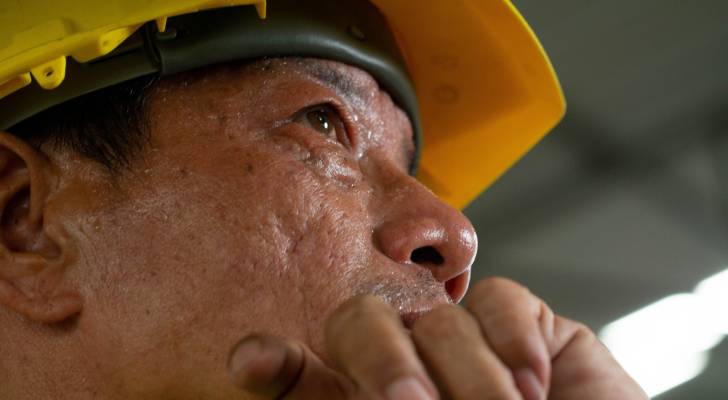
The National Institute for Occupational Safety and Health (NIOSH) is laying off hundreds of workers. Though details are limited, United Mine Workers of America (UMWA) President Cecil E. Roberts said in a recent statement,
“NIOSH began laying off hundreds of workers who are engaged in research and the improvement of products and practices that literally save the lives of coal miners every day.”
Don’t miss
- I’m 49 years old and have nothing saved for retirement — what should I do? Don’t panic. Here are 5 of the easiest ways you can catch up (and fast)
- Gain potential quarterly income through this $1B private real estate fund — even if you’re not a millionaire. Here’s how to get started with as little as $10
- Thanks to Jeff Bezos, you can now become a landlord for as little as $100 — and no, you don’t have to deal with tenants or fix freezers. Here’s how
Roberts added that NIOSH announced “significant downsizing” of offices in Morgantown, West Virginia and Pittsburgh, Pennsylvania.
The layoffs come amid a sweeping federal reorganization effort led by Health and Human Services (HHS) Secretary Robert F. Kennedy, Jr. as part of the Trump administration’s Department of Government Efficiency (DOGE) Workforce Optimization Initiative.
But what are the job cuts supposed to accomplish?
Why are these layoffs happening?
According to an HHS statement, the "Make America Healthy Again" plan aims to reduce the federal health workforce by 20,000 employees overall — shrinking HHS from 82,000 to 62,000 full-time staff. It will also consolidate 28 HHS divisions into 15 new ones, while regional offices will be reduced from 10 to just 5.
As part of the plan, NIOSH is being folded into a new agency called the Administration for a Healthy America (AHA), alongside the Health Resources and Services Administration (HRSA), the Substance Abuse and Mental Health Services Administration (SAMHSA) and other offices. HHS says the changes will save taxpayers $1.8 billion per year and improve efficiency by reducing “redundant units.”
However, critics argue that the cost savings come at the expense of public and workplace safety — especially in places like Morgantown, where NIOSH plays a key role in researching coal worker health, respiratory disease and workplace hazards.
“I do not think that these actions are being done in a coordinated way to hurt the American coal industry and those who work in it. But that is the effect,” Roberts said in the release. “Miners have and can continue to produce the materials to power American homes, produce American steel and so many other products our society uses every day.”
Read more: Car insurance premiums could spike 8% by the end of 2025 — thanks to tariffs on car imports and auto parts from Canada and Mexico. But here’s how 2 minutes can save you hundreds of dollars right now
How layoffs will impact workers — and how to protect yourself
Layoffs at NIOSH threaten not only the job security of hundreds of employees, but also the health and safety of coal miners and other high-risk workers who rely on the agency’s research.
Morgantown’s facility employed around 500 workers, reported MetroNews. Its research informed safety regulations, protective equipment standards and disease prevention strategies across several industries.
Roberts believes the downsizing could cripple progress in mine safety as the coal industry "relies on the research done there to improve its safety practices.”
Sen. Shelley Moore Capito R-W.Va. told 12 News in a statement that the cuts would harm “vital health programs,” adding that “any cuts that impact [coal workers’] health monitoring need to be restored immediately.”
In addition to the safety concerns, the economic impact could be significant for Morgantown and surrounding areas. Losing hundreds of high-paying federal jobs affects not just those laid off, but also local businesses that depend on NIOSH employees as customers. From diners and daycare centers to home service providers, many small businesses could feel the ripple effects of the layoffs.
Here are a few ways locals can manage the disruption:
- Know your rights. If you’re injured or face exposure to hazardous conditions, report it immediately to the Occupational Safety and Health Administration. Employers must still comply with its standards.
- Connect with state and nonprofit resources. West Virginia’s Department of Health, WorkForce West Virginia, the PA Workforce Development Association and organizations like the Appalachian Citizens’ Law Center may be able to offer guidance, legal help or job retraining opportunities.
- Protect your health on the job. With fewer researchers to monitor workplace hazards, it’s more important than ever to take precautions. Use proper PPE, attend all safety training and document any incidents or exposure you experience or witness.
- Consider looking for new opportunities. Sen. Capito and West Virginia Governor Patrick Morrisey both say they’re working to help affected workers find new employment. While these roles may take time to materialize, job retraining programs or federal grants may be offered soon. Pay attention to state announcements and job boards.
As Trump and DOGE aim to reshape federal agencies, communities like Morgantown are left to navigate the fallout and fight to protect the workers and industries who have long powered the country.
What to read next
- Want an extra $1,300,000 when you retire? Dave Ramsey says this 7-step plan ‘works every single time’ to kill debt, get rich in America — and that ‘anyone’ can do it
- Here are 5 ‘must have’ items that Americans (almost) always overpay for — and very quickly regret. How many are hurting you?
- There’s a 60% chance of a recession hitting the American economy this year — protect your retirement savings with these essential money moves ASAP (most of which you can complete in just minutes)
This article provides information only and should not be construed as advice. It is provided without warranty of any kind.